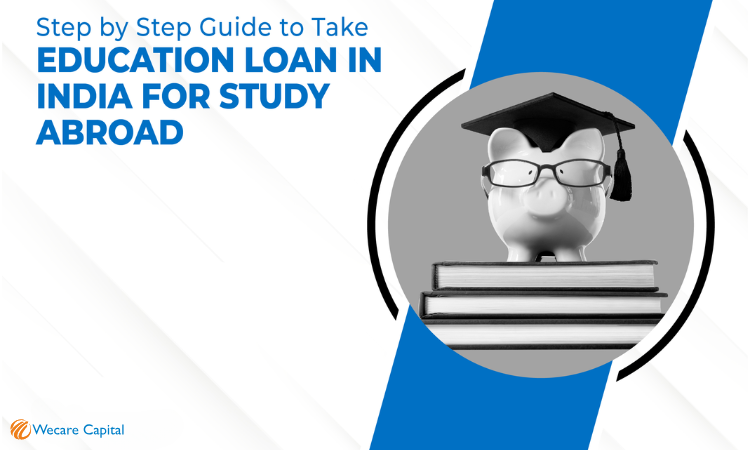Studying abroad is a dream for many students, but the high cost of tuition and living expenses can be a major hurdle. To finance their education, many students opt for an abroad education loan. One of the most crucial factors to consider while choosing a loan is the interest rate, as it directly affects the total repayment amount. In this guide, we will explore everything about abroad education loan interest rates, including types, factors affecting rates, how to get the best deal, and repayment options.
What is an Abroad Education Loan Interest Rate?
An abroad education loan interest rate is the percentage charged by banks or financial institutions on the loan amount borrowed to fund overseas education. The rate determines how much extra money a student will have to pay in addition to the principal loan amount.
Interest rates can be of two types:
- Fixed Interest Rate: Remains the same throughout the loan tenure.
- Floating Interest Rate: Changes based on market conditions and benchmark rates set by financial institutions.
Read Full Article :- Wecare Capital
Types of Abroad Education Loan Providers and Their Interest Rates
Several institutions offer education loans for studying abroad, and their interest rates vary depending on loan amount, tenure, and applicant’s profile.
1. Public Sector Banks
Government banks in India, such as SBI, Bank of Baroda, and Punjab National Bank, offer education loans with relatively lower interest rates.
✅ Interest Rate: 8% – 10% (approx.)
✅ Requires collateral for higher loan amounts
✅ Interest subsidy schemes available for eligible students
2. Private Banks
HDFC, ICICI, Axis Bank, and other private lenders provide education loans with competitive interest rates and flexible repayment options.
✅ Interest Rate: 9% – 14% (approx.)
✅ Faster loan approval process
✅ Higher interest rates compared to public banks
3. NBFCs (Non-Banking Financial Companies)
Non-banking financial institutions like Avanse, Credila, and InCred offer loans with minimal paperwork and quick disbursement.
✅ Interest Rate: 10% – 15% (approx.)
✅ No collateral required for small loan amounts
✅ Customised loan plans based on financial background
4. International Lenders
Some foreign banks and financial institutions provide loans to international students. These loans are available in foreign currencies, such as USD or GBP.
✅ Interest Rate: 5% – 12% (approx.)
✅ Requires a strong credit score or a guarantor
✅ Loans are repaid in the respective foreign currency
Factors Affecting Education Loan Interest Rates
- Type of Lender – Government banks usually offer lower interest rates than private banks or NBFCs.
- Collateral Security – Loans with collateral (property, FD, insurance) usually have lower interest rates.
- Credit Score of Co-applicant – A high credit score (700+ CIBIL score) leads to better interest rates.
- Loan Amount & Repayment Period – Higher loan amounts or extended repayment tenure may increase the interest rate.
- University and Course – Loans for reputed universities and job-oriented courses have lower interest rates.
How to Get the Best Abroad Education Loan Interest Rate?
✅ Compare Loan Offers – Research and compare loan rates from different banks and NBFCs before applying.
✅ Choose Collateral-based Loans – Providing collateral can significantly lower interest rates.
✅ Maintain a Good Credit Score – If the co-applicant has a high CIBIL score, you can negotiate for better rates.
✅ Apply for Government Schemes – Subsidies like Padho Pardesh Scheme and Central Interest Subsidy Scheme can reduce the loan burden.
✅ Negotiate with Lenders – Banks may offer better rates based on your financial background and future earnings potential.
Repayment of Abroad Education Loans
Education loans generally come with a moratorium period (loan repayment holiday) which includes the course duration plus 6-12 months after graduation. Repayment starts after this period, and interest may be charged during the moratorium.
Repayment Options:
- Standard EMI Payment – Fixed EMIs for a set period.
- Partial Interest Payment – Pay interest during the course and full EMIs later.
- Step-up Repayment – Pay lower EMIs initially, which increase over time.
Final Thoughts
Choosing the right abroad education loan is essential for managing your financial burden while studying abroad. By understanding interest rates, comparing options, and exploring repayment strategies, you can secure the best loan deal and make your dream of studying abroad a reality.
If you’re planning to take an education loan for studying abroad, research well, check eligibility criteria, and choose wisely to minimise financial stress in the future. 🚀
